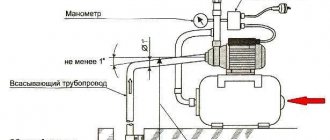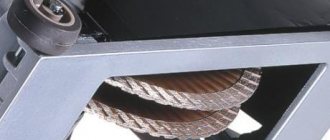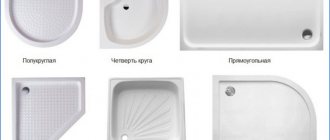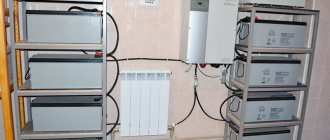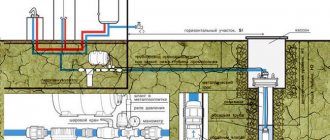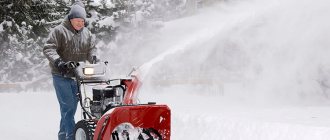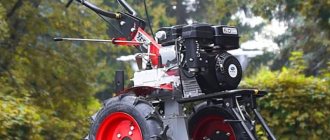How to choose a walk-behind tractor and a mini-tractor
Before choosing a walk-behind tractor or mini-tractor, you should first decide on the site in advance and do all the necessary fencing work.
It’s worth planning the site to suit your taste and your needs, so that in the future you don’t have to seriously reshape or redo anything at the last moment during the work. Tractors are divided into different classifications and into different classes. Let’s take walk-behind tractors and mini-tractors for example, so at first it can actually be difficult to choose and even understand the item of purchase itself.
If you are choosing something for the first time or want to understand for what purposes each of the given units is used, then read carefully and learn it.
First of all, classification
comes from the engine power and the weight of the equipment itself. The simplest and most budget-friendly are classic walk-behind tractors weighing up to 70 kilograms and with a power of up to 4 horsepower.
Such walk-behind tractors are suitable for simple gardening work, provided that the operation is not long enough but extensive. The most important thing is that you should follow safety precautions when working with such units.
Power expressed in horsepower
strength is enough to carry out field work such as planting potatoes and hilling beds. Subsequent classified units have more powerful filling and weight, and the conditions of use are slightly different from the previous ones.
The middle class of walk-behind tractors is represented by machines weighing from 80 to 100 kg and with a power of about 5.5 horsepower. Such horses are suitable for Russian soil and easily cope with their tasks with only average power behind them .
stuffing and intermittent performance in endurance, i.e. in operating time and other diverse functions for working with soil.
Motoblocks from 10 hp are a kind of heavyweights and are used only in difficult terrain on large areas of work. Such machines are best suited for farms and agro-industrial complexes, since the scale of work can be truly grandiose.
In general, when purchasing this type of equipment, it is worth considering whether it is expensive or, conversely, a walk-behind tractor
did not show up, after some time after intensive work it will be necessary to carry out repairs, at least for restoration purposes.
It is also worth understanding that when working with this equipment, it is necessary to take into account all safety rules that can always be observed during any work.
Attachments
The kit may include several elements, but the main part must be purchased separately. It is not necessary to take the entire kit at one time, as the costs will be high. Can be purchased separately as needed. Attachment options:
- Plow. It can be one, two or three-body. It differs in configuration, method of fastening and depth of processing.
- Rotary cutter. For cultivating soft soil. The design consists of a body with rotating blades. The width varies depending on the power of the tractor.
- Cultivator. A device for leveling a plowed field and breaking up large clods.
- Potato digger. It can be either single-row or double-row. Powered by power take-off shaft.
- Potato planter. Most often, the system plants two rows at the same time.
- Sprayers. There are different ones: for treating fields against pests, for feeding or working with fruit trees.
- Mower. The designs differ in operating principle; they are selected according to the type of mini-tractor hitch.
- Hiller. Used when growing potatoes and other crops that require the formation of ridges.
- Trailer. The design is single-axis, but can also be bi-axial.
- Utility brush for sweeping asphalt and sidewalks.
- Plow for snow removal. Available with front and rear mounting.
There are many options; there are special units that are used by utilities or enterprises with a specific nature of work. For a personal plot, you don’t need the entire list; you shouldn’t take everything at once, so that the attachments don’t lie around later.
What is better - a walk-behind tractor or a mini tractor?
Although villages and villages have fallen into disrepair and even disappeared completely in most parts of the country over the past twenty years, the remaining residents survive against all odds and strive to adapt to new living conditions. The main problem of the “extinction” of villages remains unemployment, and in order to live in a village without a permanent source of income, one has to maintain a large household plot. Without technology, farming would be difficult.
Small rural farmers who have a tractor, of course, help out with plowing the garden, hauling firewood and hay, but of course not for free. As practice shows, it is not necessary to purchase a large tractor with different implements just for the sake of one cow and a herd of sheep; it is enough to have a mini tractor or a multifunctional walk-behind tractor. The first walk-behind tractors and mini-tractors appeared in the village quite recently, when fellow countrymen began returning from the cities, having retired and leaving their apartments to their children.
Since they had “village” roots, then, of course, they wanted to have a vegetable garden and some kind of livestock. Mini tractors and walk-behind tractors immediately aroused interest due to their small dimensions; they could perform many different labor-intensive functions - transporting a cart with a decent load, plowing and loosening a garden, mowing grass. But still, a small tractor is a “toy” for teenagers who really like to ride on them, carrying loads in a small car trailer.
For a small farm, a walk-behind tractor turned out to be more practical, I learned this from my own example. For many years I have kept a small T-25 tractor, which has helped me a lot all these years, but lately I only use it for plowing the garden; during haymaking I rent it to a local farmer, who hooks a windrow rake to it. A month later, he returns the tractor to me and brings ready-made hay in rolls, such cooperation suits us, he does not need to maintain an extra tractor, I have to do the hay preparation.
I always dreamed of getting rid of manual weeding and hilling potatoes in the garden. My son, who came from the city and helped me with the garden, apparently also got tired of manual labor and he gave me and himself a gift, he bought a walk-behind tractor. We were happy to try it out in the garden, without picking up hoes as a matter of principle. We planted, weeded, hilled and dug up the potato crop using a walk-behind tractor. To our surprise, the mechanization of potato care yielded a larger harvest of root crops than when we weeded and hilled by hand. A big plus to everything, a big saving of time and effort, an important factor is the interest and excitement when working in the garden.
Product comparison table
| Model | engine's type | Fuel tank volume, l | Engine power, l. With. |
| Scout T-15 | diesel | 8 | 15 |
| MasterYard M244 4WD | 25 | 24 | |
| Dong Feng DF-244 (with cabin) | 28 | ||
| STIGA Combi 1066 HQ | petrol | 3,8 | 4,5 |
| MTD Smart RF 125 | 8,43 | ||
| MasterYard CR1838 | 7,5 | 17,5 | |
| MTD Optima LN 200H | 3,8 | 22 |
selection of equipment (mini tractor vs MB)
Dear colleagues, help! He blew the minds of himself and those around him. For a mechanical assistant. I can’t decide what I need – a mini tractor (which one) or can I get by with a walk-behind tractor (which one). Tasks:
- two adjacent plots of 30 acres each. Well, or one 60. There are no plans for special vegetable gardens, but it’s hard to say what will happen in a couple of years now. But two or three beds plus a greenhouse will be on both.
- both still need to be planned, soil brought in, paths made, etc. That is, landscape design (not on a computer, but on a bulldozer). It will take more than one year, not even in terms of ideas, but in terms of implementation and finances.
- clear snow in winter. Now the cheapest 6 hp snow blower can cope with one area, but it takes a long time and is a bit difficult for both him and me. The street is cleaned regularly, but you never know.
- There are plans for a bathhouse, which means we need to bring firewood. There are forests all around, you won't have to travel far.
- The neighbors don’t have many vegetable gardens, but you can have some fun, after all, it’s a village.
What will be the opinions?
P.S. I decided for myself a new Foreman TU220, but it’s a bit expensive, plus the canopy costs money separately, or the T-25 is very used, but in good condition (cheaper and more accessible, but you’ll be lucky to buy it).
Svan wrote: identified a new Foreman TU220
Can you fit into the greenhouse on it? The best option for your volume (in my opinion) is a good light motor-cultivator for “fine” work and a heavy walk-behind tractor for everything else. With a walk-behind tractor, you will plow, cultivate the beds, and bring firewood. And with a snow dump you push the snow from the yard onto the arable land.
Thank you, your opinion has been accepted. There is one factor in favor of 4 wheels - buy something for a long time, with a reserve for the future, and (most importantly!) I am not getting younger and healthier, especially my back. And the difference between “you are dragging” and “they are dragging you” is very great. I will move into the greenhouse, the structure will have the ability to open sideways either the entire frame or element by element specifically for the purpose of mechanized processing.
If there is no traffic police in the village, then you can use a tractor. Although they buy a tractor more for livestock - mowing, bringing hay. And how will it start in winter?! It’s still a diesel, but you can buy the MB with gasoline.
Swan wrote: and (most importantly!) I am not getting any younger or healthier, especially my back.
Heavy MB MTZ, AGRO, MS with a cutter to help and your back doesn’t hurt. These MBs are not carried around. You can make/buy an adapter and everything attaches to the adapter. The snow also pushes. And Grandfather is right about the T-25. There is a photo on the forum of MB with a cutter in a greenhouse.
Swann wrote: the difference between “you are dragging” and “they are dragging you” is very great.
Certainly. It is not clear only if the choice is made, why ask. I won’t persuade you, I’ll just say that they work on walk-behind tractors while sitting. And a tractor is a certificate, registration, and taxes. And it is unlikely that you will take one of these as an assistant for centuries.
majkl wrote: There is a photo on the forum of MB with a cutter in a greenhouse.
I worked with a walk-behind tractor in a greenhouse in the winter; there are so many different communications below and above ground. If you break something, you won't have any problems.
Vladimir S. wrote: I worked with a walk-behind tractor in a greenhouse in the winter, there are so many all kinds of communications underground and above ground. If you break something, you won't have any problems.
Beautifully done. And you can’t drive a tractor into all greenhouses. Small equipment is specially purchased for greenhouses.
Vladimir S. wrote: I worked with a walk-behind tractor in a greenhouse in the winter, there are so many all kinds of communications underground and above ground. If you break something, you won't have any problems.
Svan just got the idea to buy a tractor, not quite knowing what and how to do with it. But the desire is to buy a tractor.
Beautifully done. And you can’t drive a tractor into all greenhouses. Small equipment is specially purchased for greenhouses.
majkl, in the photo there is a greenhouse, 10 acres. There is heating, watering, lighting and a lot of all sorts of bells and whistles. On the forum in the “Agro. “The master regularly shows his photo of how he works indoors with his heavy weight, but he has a small greenhouse, you definitely can’t drive it into such a tractor.
Homemade dump
Self-dumps for agricultural machinery (motoblocks, tractors, ATVs, etc.) significantly facilitate the process of snow removal. This is especially noticeable with large piles. Any snow-clearing “gadget” for equipment consists of three elements: a working element that is in contact with the snow, a mechanism for adjusting the angle of rotation, and a fastening unit with the equipment.
Although factory models have many different types of designs for any agricultural device, self-assembly of a snow clearing element is simple and can significantly save money.
With the help of a homemade device, you can not only remove snow in winter, but also remove debris, level the area and other necessary functions.
It doesn’t matter what design the owner uses - a factory one or a do-it-yourself blade. In any case, it will have three positions:
- slope angle to the left 30 degrees;
- slope angle to the right 30 degrees;
- straight position.
Before starting snow removal work, the shovel blade should be installed in the desired position, based on three possible ones. After determining and establishing the required position, it is fixed using metal cotter pins. The width of the snow throwing area is usually one meter, but provided that the thickness of the steel used is 3-4 millimeters.
What is better to buy a walk-behind tractor or a mini tractor?
Cultivation of the soil, planting, harvesting and other agricultural joys are something that any owner of a personal subsidiary plot, farm, garden plot or cottage encounters several times every year. On a small plot of up to 10 acres, all work on the ground can be done manually without any problems . But what if you need to cultivate large areas? In this case, it is impossible to do without mechanization of manual labor. At the same time, many beginning farmers may be confused about what type of equipment to choose for their farm? To answer this question, we will briefly examine the two main types of agricultural machines for this type of work.
Owner reviews
Egor, 39 years old:
Hello. Two years ago I purchased a walk-behind shovel LM-100. I'm sticking to the Neva. During operation, I discovered that things would go more efficiently if weights of 10 kg each were attached to the wheels of the walk-behind tractor. More weight of the walk-behind tractor means more weight of snow can move the blade. In addition, in loose, high snow, it is better to use lugs.
Victor, 41 years old:
I use the blade to the Centaur, the angle of attack is adjustable left and right (30 degrees) and straight. The set includes knives - steel and rubber. The canopy saves both from snow and from dirt - in the summer and autumn I collect heaps of garbage from the garden. The simplicity of the design and the price are amazing!
Yuri, 44 years old:
I didn’t want to spend money on buying a finished product, so I decided to make it myself. In my father’s bins I found a gas cylinder, pipes, corners and work began to boil. I found the drawings on the Internet, did a little digging, and came out with a pretty good blade.
Walk-behind tractor
This is a self-propelled single-axle vehicle, differing from all other types of tractors in its smallest dimensions .
When using various types of attachments, it can perform the following functions:
- Plowing the land.
- Harrowing.
- Hilling.
- Planting and harvesting crops.
- Transportation of various goods.
Despite the fact that all walk-behind tractors perform the same functions, they are usually classified into three groups depending on power:
- Lightweight - engine power no more than 5 hp. Used in small farms on soft soil. They do not tolerate large amounts of work and hard soil.
- Medium - with an engine from 5 to 8 hp. This more serious equipment easily copes with plots from 20 to 60 acres and unfavorable soils, begins to be equipped with an automatic transmission and supports more types of attachments.
- Heavy - equipped with powerful engines over 8 hp. and their size is already approaching mini tractors, they weigh over 130 kg and can easily cope with the hardest soils. This walk-behind tractor can easily process areas of up to 2 hectares.
A little about us
We have connected the largest network of authorized service centers throughout Russia and strictly control the quality of repairs, spare parts and customer service in each service.
36 service centers throughout the Russian Federation
We sell equipment wholesale and retail in Russia, Belarus, Kazakhstan and Europe, so we purchase large quantities of goods only directly from manufacturers, due to which we receive the best purchasing prices. In turn, we also offer our customers the best prices, and for most products we were able to implement the “Best Price Guarantee” program. By purchasing from us, you do not overpay to unnecessary intermediaries.
Factory price
When purchasing equipment in our warehouse store in Moscow, you can not only see the entire range presented, conduct test drives of the models you like, but also receive an additional 3% discount on the cost of the equipment upon pickup.
Discount for pickup -3% of the purchase amount
By purchasing from us, you receive equipment that is completely ready for use: all the necessary oils and liquids are poured into it, the main working units are adjusted and a test run is carried out to identify manufacturing defects.
Free pre-sale preparation
We will help you solve any questions or problems that arise during the operation of the equipment even after the end of the warranty period. You can always get a free consultation by phone from service center specialists, order a mechanic to come to your home, bring the equipment to the service center or order spare parts.
Preferential after-sales service
We have reached agreements with almost all banks and leasing companies in Russia. Every day we analyze loan and leasing offers, offering our clients the best options to choose from.
The best conditions for loans and leasing
The best service, wherever you are! Any malfunction in the equipment will be eliminated by the experienced specialists of our field service, right at your home, even during the post-warranty period. (During the warranty period, mechanic work and spare parts are free)
Field service operating throughout the Russian Federation
You can carry out free TO for 4 months at any of the 36 authorized service centers. Free TO includes: diagnostics and adjustment of all components and assemblies, lubrication of all necessary parts and oil change, tightening of fasteners and connections, and even replacement of consumables not included in the warranty.
Free maintenance for 4 months
We will deliver your order right to your doorstep anywhere in Russia. The calculation is made after you are sure of the completeness and quality of the goods. Find out the exact cost of delivery by calling (free call)
Delivery to your doorstep anywhere in the Russian Federation
If the purchase does not meet your expectations, then we will return all your money, even though small-sized agricultural equipment is not subject to exchange or return according to law.
We will return all your money if you are not satisfied with your purchase.
Mini tractor
Its design completely replicates the familiar full-size tractor and has the same functionality and purpose. Its only difference is in its dimensions - it is much more compact and weighs only up to 1600 kg . Like its “adult” relative, the mini tractor has a full-fledged gasoline or diesel engine, transmission, chassis and controls.
Mini tractors are also usually divided into three groups:
- Lightweight - have an engine power of up to 15 hp. These are the most compact and maneuverable machines of their type, designed for not too serious work on small forestry.
- Medium - with an engine from 15 to 30 hp. These are ideal machines for agricultural work on a farm or a small farm.
- Heavy - powerful cars with an engine of 30 hp and above. Their dimensions are already approaching full-size tractors and are capable of performing any type of work over large areas.
Branson 5220C
Branson 5220C can be classified as the most expensive. And this is quite understandable. The agricultural all-wheel drive motor allows you to cultivate large areas. The mini-tractor is suitable for use both on the farm and in larger-scale projects. The engine runs entirely on diesel fuel. The engine of the device has 4 cylinders and its power reaches 55 hp. It is thanks to it that the mini-tractor can accelerate to 23.8 km/h. The mini-tractor's gearbox has 24 speeds - 12 forward and 12 rear.
The appearance of the mini-tractor is also pleasantly surprising. It is somewhat similar to the Grasshopper GH 220 tractor, but differs in build quality. There is no doubt about the reliability of this unit. The dimensions are 331.6 × 132-182 × 236 cm. It is worth noting that the cabin here is completely closed, and its height can be changed at your discretion. That is, when ordering a mini-tractor, you must immediately indicate the desired height.
The cabin has a full heating system, as well as air conditioning. The seat is as comfortable as possible to reduce the load on the driver's back. Due to the fact that the cabin of the mini-tractor is completely sealed, you can work on it at any time of the year.
What do a walk-behind tractor and a mini tractor have in common?
By and large, they work on the same principle - using traction force , and perform almost the same types of work. Both of them support various attachments with identical purposes. Everything that a walk-behind tractor can do, a mini tractor can do. With light assumptions the opposite is true. The main difference between them is the method of use, engine power and performance.
At the same time, it would be incorrect to say that one type of technology is completely better or worse than another. As with all areas of automated technology, each unit has its own purpose for which it was designed.
Belarus MTZ 320.4 Lamborghini
This model can be classified as a mid-price mini-tractor. Outwardly, it looks like professional equipment, but has somewhat limited capabilities and reduced dimensions. The scope of use of such a mini-tractor is no longer limited to summer cottages or farms. It can be used in both construction and public utilities.
The main external difference between the Belarus MTZ 320.4 mini-tractor and the previous ones is the presence of a cabin with a roof, which can be removed if necessary. You can also note the internal heating system, air conditioning, and headlights.
The unit has a power of 36 hp, and the gearbox is equipped with 24 speed modes: 16 forward and 8 rear. This mini-tractor was produced in Belarus. The total area that it can cultivate reaches 20 hectares.
Externally, the mini-tractor looks quite large. With dimensions of 322x155x169 cm, it weighs 1720 kg. Maximum speed is 25 km/h.
What is the difference between a mini tractor and a walk-behind tractor?
As mentioned earlier, the main difference is the greater power of the first and, as a result, higher productivity. So, in terms of power, mini tractors begin where walk-behind tractors end. Thus, the most powerful and heaviest walk-behind tractors can compete with light mini tractors in terms of performance and ability to handle hard soil. However, power is not their only difference. In addition, the two types of technology differ in the following nuances:
- Method of use . When driving a mini tractor, the operator sits in the seat of the machine and controls it using the steering wheel, pedals and gear shift lever - just like in a regular car. The level of load on a person is minimal; the machine bears all the weight. When using a walk-behind tractor, the operator follows the equipment, holding the control levers in his hands and independently adjusting the depth of tillage. Needless to say, the need to keep a powerful machine in check requires proper physical training from the operator. This places a considerable load on a person’s back and arms, and even a physically strong person is unable to work in this mode for a long time.
- Price . It is not surprising that mini tractors are much more expensive than walk-behind tractors, because they are much more complex and productive machines. On average, on the Russian market the price of walk-behind tractors starts from 30 thousand rubles for light ones and can reach up to 500 thousand rubles for the heaviest ones. At that time, mini tractors in our country cost on average 300 thousand rubles and more, while the price of the most expensive copies can reach up to 5 million rubles.
Transmission parameters
Number of gears. A kind of standard that ensures comfortable work with a walk-behind tractor is the presence of at least two gears for moving forward, one for moving in reverse.
Recently, many manufacturers are deviating from this postulate and equipping their walk-behind tractors with gearboxes with a large number of shift stages, which gives the user the opportunity to more flexibly control the speed and traction on the drive axle of the walk-behind tractor. On sale you can find models with eight steps for moving forward and four for moving in reverse.
Gearbox type. By means of a gearbox, the torque is transmitted from the engine shaft to the drive axle and the active attachments of the walk-behind tractor. There are several types of gearbox design:
- Chain. Torque is transmitted from the engine to the drive axle via a chain drive. This is a cheap and fairly reliable way to implement a gearbox. Its advantages include the simplicity and relative reliability of the design. Disadvantages include intolerance to excessive stress. When a high load is applied to a chain, it tends to stretch and may break. In addition, in this type of gearbox only one gear can be implemented for moving forward and backward.
- Worm. The simplest and cheapest way to transmit torque. Since there is nothing more in the system except the worm shaft and the gear it drives, such a gearbox has a fairly high efficiency (98%). However, the resource of the node is very limited and highly depends on the operating conditions and the efforts applied to it. There is no gear change. The speed of rotation of the wheels directly depends on the engine speed.
- The gear-chain reducer has high reliability and service life. The moment from the main gear, as in the case of a chain gearbox, is transmitted to the drive axle by a chain, but the change in the gear ratio occurs by engaging certain pairs of gears. It is in this type of gearbox that the gear shift mechanism is most simply implemented. The weak point is still the same - the chain drive as part of the gearbox.
- Gear reducer. The most expensive and most reliable method of delivering torque to the drive axle. It has high reliability and service life. At the same time, this is the noisiest solution.
If you plan to use the walk-behind tractor in conjunction with active attachments, the best choice would be a model equipped with a gear-chain or gear reducer.
Clutch type. The clutch assembly is an important element of the transmission of any walk-behind tractor. Its task is to transmit torque from the engine shaft to the input shaft of the gearbox (gearbox). Moreover, not just transmission, but timely closing and opening of the mechanical connection between the engine and the gearbox according to user commands. There are several types of clutch:
- belt;
- V-belt;
- disk;
- multi-disc;
- frictional
Most often in the design of a walk-behind tractor you can find either a belt or disk type of clutch. The belt clutch is characterized by its simple and uncomplicated design. The engine shaft and the input shaft of the box are connected to each other by a conventional ribbed or ribbed belt.
When the clutch lever is depressed, the belt is not tensioned and simply slips along the engine shaft pulley. When the lever is released, the belt tension mechanism is activated, and rotation is transmitted to the gearbox shaft. Already from the description of the work, the weak points of this design are visible:
- low efficiency, since a lot of rotational energy is spent on friction;
- the impossibility of transmitting large torque, the belt will slip, heat up and eventually simply break. For this reason, a belt clutch is not used in conjunction with a powerful power plant.
However, the belt clutch itself is very simple and incredibly repairable. You just need to have a spare belt, and repairs can be carried out in the field. Buying spare parts won’t hurt your pocket either.
The situation is somewhat different with disc types of clutches. Their operating principle is based on the ability to control friction forces. The driven disk is pressed against the driving disk with great force, resulting in a strong mechanical connection for transmitting torque.
The disc-type clutch is extremely reliable and, when used correctly, does not cause much trouble for the operator. Disadvantages include the high cost of the design and the impossibility of carrying out repairs in the field.
